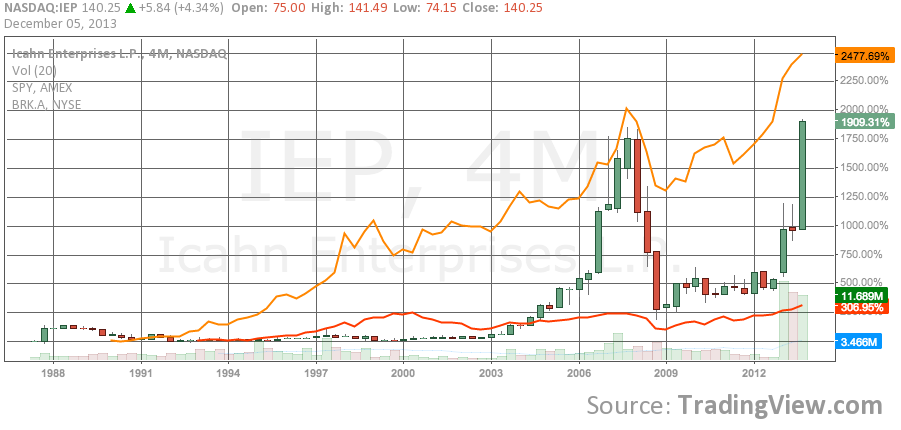In October 2008, Warren Buffett wrote an op-ed in New York Times titled “Buy American. I Am”. When volatility and correlations were at record high levels, when most investors were running scared and could not sell their stocks fast enough, Buffett was buying with both hands.
Five years later, the S & P 500 has more than doubled. More interestingly, there are 115 stocks that have gone up more than 1000% in the same time. The big winners come from various industries: biotech, media, furniture stores, a Chinese search engine, an yoga apparel store, an online travel agency, pizza restaurants, regional banks, casinos, hotels and many others. Many of them were priced for bankruptcy, which never materialized. You did not have to guess which ones were going go survive. You could have made a ton of money by entering in the middle of their trends, when their existence was not questionable and when they were making new 52-week highs every month.
Every time I mention the best performing stocks over a certain period of time, there is always someone to criticize me – “Don’t tell me what happened. Tell me what will happen next. Tell me the next stocks that will go up over 1000% in the next 5 years”.
I don’t have a crystal ball. I don’t know. No one does.
What I know is that big corrections put the foundations for big future moves. Bear markets make investors a lot of money. Most of them just don’t know it at the time.
What I know is that many of the best future performers are likely to make new 52-week highs well ahead of the market averages.
What I know is that strong stocks leave traces, so you could participate in part of their trends. Take the best performing stock of the past 5 years for example. Pharmacyclics ($PCYC) went up more than 110 times in the last half decade. It more than doubled in each of the past three years. It hit new all-time highs multiple times. You did not need a time machine to notice this trend, but you needed some basic trend following rules in order to stay with this trend long enough to make a difference in your returns.
